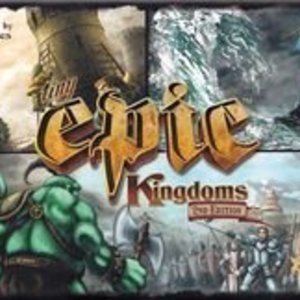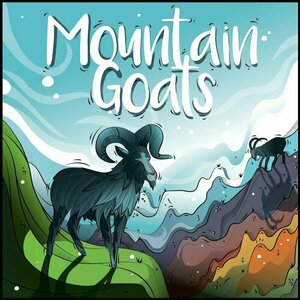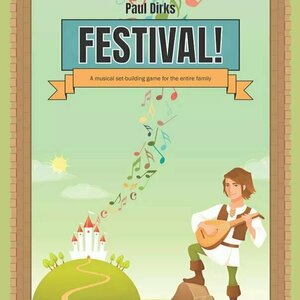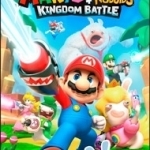
123 Kids Fun EDUCATION Math & Alphabet Cool Games
Games and Education
App
123 Kids Fun EDUCATION - Free Educational Games for Preschool Kids and Toddlers including counting,...

Vapiano (NEW)
Food & Drink and Lifestyle
App
Now there’s even more reason to become a member of VAPIANO PEOPLE, the VAPIANO rewards programme....
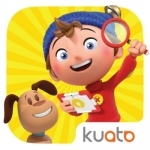
Noddy Toyland Detective - Let's Investigate
Education and Games
App
Join Noddy as Toyland’s most famous detective in an adventure filled with storytelling, learning...
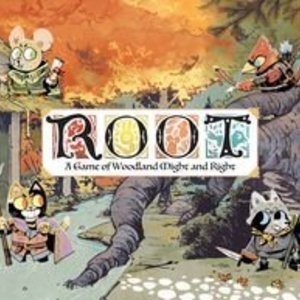
Root
Tabletop Game
Root is a game of adventure and war in which 2 to 4 (6 with the 'Riverfolk' expansion) players...
Boardgames 2018Games
Purple Phoenix Games (2266 KP) rated Tiny Epic Kingdoms in Tabletop Games
Jul 30, 2019
In Tiny Epic Kingdoms, you are the ruler of (you guessed it) a tiny kingdom. You, however, are not content with simply maintaining your realm – you have plans to expand your borders and make your kingdom not-so-tiny! Send your adventurers out to explore new lands, learn new magics, construct towers to assert your dominance, and fight off others who would stand in your way! Do you have the strategy necessary to outwit your competitors and grow your kingdom? Play to find out!
DISCLAIMER: There are several expansions to this game, but we are not reviewing them at this time. Should we review them in the future we will either update this review or post a link to the new material here. -T
Tiny Epic Kingdoms is a game of worker placement, area control, and action point allowance. Players take turns gathering resources, buildings towers, researching magic, or exploring (and potentially waging war) in new lands. As the active player, on your turn you will select and perform one of the six available actions from the Action Card: Patrol, Quest, Build, Research, Expand, or Trade. Following your action, and still on your turn, the remaining players will either decide to perform the same action you chose, or collect resources. Once everyone has had the chance to act, your turn is over. The next player now becomes the active player and the process repeats with one big change – the action you chose on your turn is no longer available for selection. Each subsequent active player will always have 1 fewer action choice on their turn. This process repeats until there are no more actions available. When this happens, the Action Card is cleared and all actions are available once more for selection. Strategy is key – which action can you choose on your turn to best benefit you while also inhibiting your competitors? The game ends at the end of the turn in which one of these three things has happened: a player has all of their meeples in play, a player has built the 6th level on the tower card, or a player has reached the 5th level of magic on their faction card. End-game points are scored based on meeples in play, magic level, tower level, and control of Capital Cities. The player with the highest score wins!
For such a small game, there’s definitely a fair amount of strategy involved in Tiny Epic Kingdoms. You’ve got to decide on the best approach for you, and it must be adaptable to any given situation. Do you play it safe, quietly collecting resources, trying to achieve your end-game goals the fastest? Or do you venture out to confront your opponents, trying to usurp their territory and resources and take them out as your competition? Or maybe you try to stay civil, but an opponent is threatening your progress and now you’ve got to fight back? There are lots of strategic options, and every game feels like a new challenge.
One thing I enjoy about Tiny Epic Kingdoms is that you get to act on every single turn, even if you aren’t the active player. You don’t have to sit there and watch your friends play – you have the chance to benefit during every single turn, even if it’s merely collecting resources. The opportunity to act on every turn also adds a little bit of ‘take that’ to this game. I might choose an action on my turn as the active player that I know one of my competitors cannot perform – thus forcing them to collect resources and waste the opportunity to perform that specific action for an entire round. And since that action cannot be picked again until all available actions have already been chosen, I’ve successfully blocked their progress in a certain area of play. Your strategy has to extend beyond just your turn as the active player – you must consider all options for your opponents as well.
The thing I don’t necessarily like about Tiny Epic Kingdoms is that the gameplay can be a little stale. Unless you’re playing with people who actively try to engage with you, it is extremely easy to just stay in your own realm and not even interact with anyone at all. There’s no forced interaction in this game, and although it is admittedly nice sometimes, mostly it just feels like we’re all playing the same game alone. It’s like we all just take turns performing/following actions until someone has triggered the end-game.
Overall, I like Tiny Epic Kingdoms. It’s not my favorite Tiny Epic game, but it’s a good one. There’s a decent amount of strategy involved, but at times it can feel more like a ‘take that’ type game to me. The lack of forced player interaction can lead to dull gameplay and a lackluster experience. It’s not a bad game. It’s just not the most epic Tiny Epic game out there, in my opinion. That’s why Purple Phoenix Games gives it a regal 14 / 18.
Purple Phoenix Games (2266 KP) rated Mountain Goats in Tabletop Games
Mar 14, 2021
Mountain Goats is a game in which players are racing to the top of 6 different mountains with their goats, in a bid to be the ‘king of the hill,’ if you will. To setup the game, lay out the Mountain cards into a grid, as described in the rules. Place the point tokens at the top of their corresponding Mountain cards, set the Bonus point tokens to the side, and all players place one Goat meeple at the bottom of each set of Mountain cards. The game is now ready to start.
On your turn, you will roll the 4 dice of the game. Using those results, you will create groups of dice, in which the dice total dictates which of your Goats is moved. Once you have created your groups, you will move your Goat up one space on the corresponding Mountain. (For example, if one of my dice groups is a 3 and a 2, then I will move my Goat on Mountain 5 up one space). After moving all of your affected Goats, pass the dice to the next player. Simple, right? Yep! Now here’s where it gets interesting. If you get a Goat to the top of a Mountain, you will collect a Point token from the corresponding pile. If an opponent is already at the top of a Mountain and you are able to move there, then you kick your opponent back to the bottom of that mountain, and claim the top spot for yourself, collecting a Point token as normal! AND if you create a dice set for a Mountain on which you are already at the top, you get to collect an additional Point token and keep your Goat at the top. How long can you hang onto that top spot? I guess you’ll find out. If/when you collect at least 1 Point token from each of the 6 Mountains, you get to claim the highest-value Bonus point token still available.
Play continues in this manner until either all of the Bonus point tokens have been claimed, or when 3 Mountains have no more Point tokens remaining. Players count up all of their collected points, and the player with the highest score is the winner.
The thing I like about Mountain Goats the most is that it is so fast and easy to play/teach. The concept is easy to grasp, the mechanics are simple, and the gameplay is engaging. So right off the bat, this is a solid game for me. The next thing I like is that even though it is such a small, light game, you’ve still got to have a strategy to succeed. With the Mountains numbered 5-10, you really have to think about how you want to group your dice. If your total falls below 5 or over 10, it won’t move any Goats! So if you’ve got a 6, 6, 5, and 2, how can you best maximize your movement? Are you willing to sacrifice a die because it doesn’t necessarily work with your strategy this turn? Or do you want to move as many Goats as possible every turn? It’s really up to you, and that strategic flexibility heightens the gameplay for me.
The other thing I really like about Mountain Goats is the amount of player interaction, in a sort of take-that way. When you reach the top of a Mountain, if an opponent is already there, they get kicked back to the bottom! So not only do they have to start the climb over again, but they can’t just sit pretty collecting Point tokens when possible. For me, the slight take-that element in this game is more friendly than cutthroat, and that really makes the overall gameplay experience more positive. Starting over from the bottom is, at most, only 4 cards from the top, so getting kicked down isn’t totally detrimental to the game atmosphere.
Components. They’re great! The cards are nice and sturdy, the artwork colorful and numbering clear. The Point tokens are nice thick cardboard, the dice are big and clear, and the Goat meeples are chunky and fun to manipulate. I have yet to see a game from BoardGameTables.com that has poor production quality, and Mountain Goats is no exception.
All in all, I think this is a great and fun little game. The concept is cute, the gameplay itself is fun and engaging, and the small footprint and short playtime make it an enjoyable little game. And since the gist of the game is just counting/numbers, it can be played with relatively young gamers, which makes it a good family-friendly filler game. Purple Phoenix Games gives Mountain Goats an ascending 9 / 12. Give it a shot and see if you’ve got what it takes to come out on top!
Purple Phoenix Games (2266 KP) rated Festival! in Tabletop Games
Nov 24, 2020
Festival! is a competitive set collection game for larger groups, three to seven players. It is set in a medieval kingdom and the game lasts for four festivals. During the game players will be collecting sets of cards to be scored immediately and collecting other cards to be scored at the game’s end.
DISCLAIMER: We were provided a prototype copy of this game for the purposes of this review. These are preview copy components, and I do not know for sure if the final components will be any different from these shown. Also, it is not my intention to detail every rule in the game, but give an idea of how the game plays. You are invited to download the rulebook, back the game through the forthcoming Kickstarter campaign, or through any retailers stocking it after fulfillment. -T
To setup, place the board in the middle of the table. Each player chooses a color of pawn to represent them and places one pawn on the 0 space upon the scoring track and the other pawn in the Festival! area upon the board. The game comes with four different types of cards and each type will be shuffled and placed face-down in stacks as in the photo below. Place the festival marker on either the 0 or 4 space (the rules are not clear, but it is to track the number of festivals, so just choose one) and give the first player busteeple to the youngest player. The game may now begin.
Festival! is played over several turns, but the first three turns will see players taking turns to travel to the different areas of the board and collect cards once they arrive. The initial Festival! area is located between the City and Village areas so a player can choose to move their pawn into either of those areas. As is printed on the board areas themselves, when players arrive in the Country they will immediately draw three Ensemble (green) cards to their hand and their turn is over. A trip to the Village affords the player two Ensemble cards to be drawn, while a visit to the City will allow a player to either draw one Ensemble card OR play as many cards from their hand as they choose. Finally, should the player’s wanderlust urge them to the Palace, they may draw a Palace card to be played to their tableau immediately. Movement from one area to the next is always done to the adjacent area. So if in the Village a player may only move to either the Country or the City. If in the Country a player may only move to the Village.
As I mentioned, the first three turns are head start rounds where players are merely collecting cards to amass a hand (of limit 7) of cards that can be played in sets in their personal tableau. These cards are divided into Exotic, Percussion, Melodic, and Choir cards. Players may play as many cards as they like when in the City, but will score bonus set and superset points if they are able to lay down multiple unique cards in each group. For example, a Horn card is worth one VP alone, but with three other unique Melodic cards earns bonus points for the entire set.
After the first three turns have been played, the first player will then flip a Festival card (stacked on the game board) at the beginning of each turn. It is from this stack that the four “Festival!” cards are located, and they are the time trackers for the game. If the result is “Preparation,” the turns continue as normal with no change. However, should the flipped card be a “Festival!” face, then players within range of the Festival Stages may claim a stage and participate in the festival. Participation in the festival simply means that players may play cards as normally played in the City, but then are entitled to one of the drawn Finale cards. These cards are scored at the end of the game and typically award bonus points for various reasons.
Play continues in this fashion of traveling the board areas to collect cards, performing in festivals, and earning the most amount of VP at game end, which is immediately following the fourth festival. The player with the most VP is the winner!
Components. Again, this is a prototype copy of the game, so the components may be different upon completion of a successful Kickstarter campaign. What we were provided, however, is a good-looking, though muted, game board, a ton of cards, and some painted wooden tokens. The tokens are fine, and I am sure will look different once the game is finalized. The cards are good, an interesting dimension, and the art upon them is good and simple. In fact, the cards’ art remind me of several computer icon sets, specifically Shadow or Sardi (though I use Sweet-Rainbow).
But how does it play? Okay, every time I get a new game I always play it solo multi-handed. During this initial play I had several questions for the designer about scenarios and other oddities that were not covered in the rulebook. He graciously, and immediately, answered my questions and the next play through ran quite smoothly. So I am sure the rulebook will be tweaked quite a bit before final production.
Once I was playing the right way the game ran smoothly and quickly. I found myself planning my turn in advance, however your success truly is dependent on the cards you draw. Ensemble cards are just the instruments, voices, and Minstrel (wild) cards, while the Palace cards are the rule-breaking fun cards. They allow increased travel, protection from certain cards in the deck, and other goodies I won’t spoil here. So having a nice collection of Palace cards can alleviate a lot of the random card draw issues that will plague players who refuse to grab the Palace cards. As I played more and more I found that I generally follow one strategy, but have to switch up tactics depending on my card draws. This is good and okay (not “bad”). Going in with a plan of attack is great, and being able to become flexible mid-game is enjoyable.
Overall this one is surprising to me because I was initially frustrated with the vague rulebook, but once I truly knew the real rules and how everything played together I found a real fondness for it. Festival! will probably never make it close to my Top 10 Games of All Time list, but for larger groups who are tiring of the hidden traitor or social deduction games, this one is a breath of fresh air. It can handle up to seven players, and is an easier teach than many other games for mid-to-large groups.
So if you are looking for something different for a weird player count, and you need some more medieval rock star games in your collection please check out Festival!. (Do I need the period there or am I covered with the exclamation point from the title of the game? I was not an English major.) I think you will be pleasantly surprised at how this unassuming set collection game (with aspects of take-that which I did not explore here) will perform. I am looking forward to following the Kickstarter campaign set to launch in Spring 2021, so keep it on your radars, people.
Purple Phoenix Games (2266 KP) rated Century: Golem Edition in Tabletop Games
Jun 12, 2019
In Century: Golem Edition you are part of a trading caravan. A procurer and trader of beautiful crystals, which seems like a way more exciting job than a trader of spices. You are collecting crystals not to trade to other players, but to summon forth great golems from the earth to aid you in your toils, protect your crystal hauls, and place you heads above your opponents. Kinda.
So you are using cards from your hand to exchange crystal types for other crystal types, grabbing crystals for the exchanges, resting to gather your action cards back to your hand, and summoning the crystal golems. As the whole point of the game is to have the most Victory Points from these golem cards, they are the most important goals to achieve. Some golems require you to have three pink crystals. But you only have five green ones! You better get to exchanging and upgrading, my friend. Oh, and your opponents see what you are trying to gather and are trying to summon the same golems. It’s a race!
Sticking with that, this game is learned very quickly; the rulebook is one printed page, and also played very quickly. Yes, it says on the box that the game will last 30-45 minutes, but between players who know the game well, this can be a 15-20 minute game. Turns are fast, if you aren’t playing with opponents who are AP-prone, and the game just zooms along until someone summons their fifth golem. Count up the points (remember those metal coins? They are your bonus VPs) and see who is the golem master! (That’s not what the winner is called, but I was on a roll.)
This game is amazing. The game play is fast and stressful and fun. The components are some of the best we have seen. Heck, even the insert is great! I really have nothing bad to say about this at all other than I wish we played it more often. That said, Purple Phoenix Games gives this one a golemtastic 23 / 24.
https://purplephoenixgames.wordpress.com/2019/01/30/century-golem-edition-review/
Gareth von Kallenbach (980 KP) rated Mario + Rabbids Kingdom Battle in Video Games
Jun 19, 2019
Mario vs. Rabbids: Kingdom Battle blends the iconic Nintendo characters with the Ubisoft Rabbids in a new turn based adventure that fans will love.
Mario, Yoshi, Luigi, and others blend with the mischievous Rabbids after a hysterical accident combines the two franchises.
Using a guide, players will move across a map, collecting coins as they go which can be used to upgrade your gear at various times.
When players enter certain arenas, the game becomes a turn based tactical combat game. Think X-Com but more family friendly and you begin to understand the fun and challenges that await them.
A typical round involves players moving to a point on the field, taking cover, and firing an attack shot at an enemy. Players may also opt to use a defensive skill when available or charge in for a close-quarters attack.
Should players complete the round with at least one of their three players still standing, they can move onto a new area and fight a new set of challenges.
I was doing very well until the first Mid-Boss who along with his minions presented a large challenge. The game gave me the option to play in an easier mode, but that did not seem to matter much as the enemies used travel tubes, exploding boxes, and other tactics to dominate.
Being able to upgrade your weapons is a big help as often the extra amount of damage you can deal an enemy is the key to winning a battle or failing miserably.
The game offers a co-op mode for players looking to play with another player and it is an easy game to play, but one that is very difficult to master.
The Game did very well at E3 when it was announced and won several awards which are well-deserved as after several days of playing the game, I am not bored with it at all and still keep coming back to it again and again.
This is a big deal for me as I often become bored with Nintendo games after a few days as I often find the dated graphics and gameplay difficult to hold my attention for long compared to other options that are out there. This time, I found a game that I love and enjoy the challenge and whimsical blend of styles which makes this one the first real reason to own a Nintendo Switch as I have found it far more enjoyable than any other title currently available for the system, Zelda included.
http://sknr.net/2017/08/28/mario-vs-rabbids-kingdom-battle/
Darren (1599 KP) rated Kidnapping Mr. Heineken (2015) in Movies
Jul 25, 2019
With the plan in place the kidnapping goes well the wait for the ransom is what takes the time and tests the strength of the kidnappers over the victims as we follow what could be the undoing of the men.
Thoughts on Kidnapping Freddy Heineken
Characters – Cor Van Hout is the leader of the gang, he brings his men together to complete the jobs with some failing and others not, he comes up with the latest job while his personal life is about to hit the highs a father could experience. Willem is the hot head of the group who will go past the marks to make the job get done and he could become the biggest problem involved. Freddy Heineken is the beer tycoon that has become the target of this men and he stays extremely calm through his ordeal trying to friend his kidnappers too.
Performance – Jim Sturgess is strong in the leading role of this film throughout feeling like the rest would listen to his every word. Sam Worthington is good in the loose cannon role too. Anthony Hopkins is as always the star of the show here as you want to see all of his scenes.
Story – The story is based on the true story of what happened when a group of criminals kidnap the tycoon and how they were not completely sure things would work and how things could go wrong. This is good because it doesn’t go down a slick as the best heist movies but is also calm enough to feel like it is based on real people human errors through the heist.
Action/Crime – There are a couple of good car chases through the film which do make up the action side of things while the whole story is about the crime being committed.
Settings – The streets involved in Amsterdam show us how tight the car chases can be and escape routes by more than just road, we do feel like this is authentic with how everything unfolds during the crime.
Scene of the Movie – Freddy’s orders.
That Moment That Annoyed Me – The clear choice for a problem is having some Dutch cast members but the leads are not.
Final Thoughts – This is one of the films that didn’t get much talk when it came out but I don’t understand why, it is an enjoyable and one film that is worth watching for all the heist fans out there.
Overall: Good heist film.
